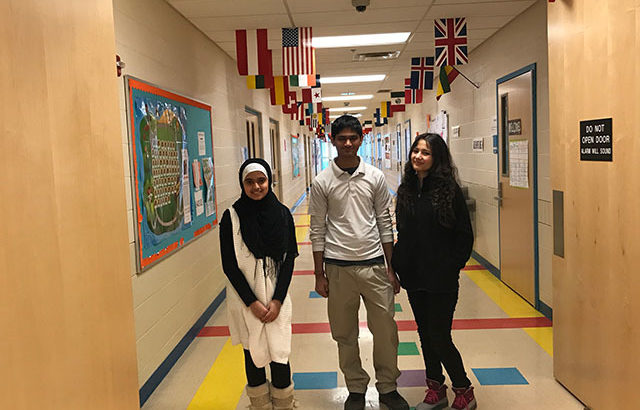Estados Unidos/Marzo de 2017/Fuente: News 5
RESUMEN: Cleveland es un crisol para inmigrantes, refugiados y grupos étnicos. Los bolsillos de barrios ricos y diversos han avergonzado a Cleveland desde el siglo XVIII. En los últimos años, el número de refugiados que llegan a Cleveland ha aumentado constantemente. Aquellos que vienen a Cleveland son a menudo niños que han estado fuera de la escuela durante años debido a la guerra y la reubicación. Cuando llegan a Cleveland, muchos hablan poco o ningún inglés y están atrasados académicamente. El viaje de Roba Mohammed desde Irak no fue un viaje fácil. En 2004, dejó Irak con su familia debido a la guerra en curso que afecta su ciudad de Bagdad. Ella vivió en Damasco, Siria durante diez años antes de irse a Irak de nuevo debido a la guerra siria.
Cleveland is a melting pot for immigrants, refugees, and ethnic groups. Pockets of rich, diverse neighborhoods have shamed Cleveland’s since the 18th Century.
In recent years, the number of refugees arriving in Cleveland has steadily increased. Those coming to Cleveland are often children who have been out of school for years due to war and relocation. When they arrive in Cleveland, many have little to no English language skills and are behind academically.
«There were not others like me»
Roba Mohammed’s journey from Iraq wasn’t an easy journey. In 2004, she left Iraq with her family due to the ongoing war plaguing their town of Baghdad. She lived in Damascus, Syria for ten years before leaving to Iraq again due to the Syrian war.
«When I first came here [Cleveland] in 2015, I was at Lakewood High School. I understood little English, but couldn’t speak it enough to talk to anyone or learn. There were not others like me. I’m shy,» said Mohammed. «Here, everyone is different with different cultures so it’s easier to learn and make mistakes.»

Mohammed is not alone. Refugees coming to America have many challenges they carry on their back. Education is one of the environments refugees are thrown into when they arrive.
The Thomas Jefferson International Newcomers Academy is assisting incoming immigrants and refugees to transition to life in the United States, first starting with education.
Thomas Jefferson is one of the only schools in the country offering education to all grades from Kindergarten through 12th grade, allowing families to stick together in the same school.
Marisol Burgos, the principal of the school, has seen student enrollment increase over the years, but particularly in this school year alone. Since the school was established seven years ago, enrollment has risen from 118 students to 919 students.
«Last year, we were waiting for our Syrian students to come. Between 60 to 100 families arrived from the beginning of the school year until now,» said Burgos. «We went from having 596 students in August 2016 to currently 919 students.»
Diversity is obvious
Walking through the school, the hallways are filled students conversing in their native language. With 23 languages spoken throughout the school, the school’s diversity is obvious. Most students who come to the school come with little to no English. All the teachers are accredited with the TESOL endorsement (teaching English as a second language.)
There are 14 bilingual paired professionals who visit the classrooms on a regular basis to ensure students are comprehending the lessons. There are some languages that are not represented such as Farsi.
Key facts about the school:
- 412 Spanish speaking students
- 175 Arabic speaking students
- 125 Swahili speaking students
- 48% of students are refugees
- 52% of students are immigrants or of Puerto Rican origin.








 Users Today : 81
Users Today : 81 Total Users : 35460098
Total Users : 35460098 Views Today : 101
Views Today : 101 Total views : 3418732
Total views : 3418732